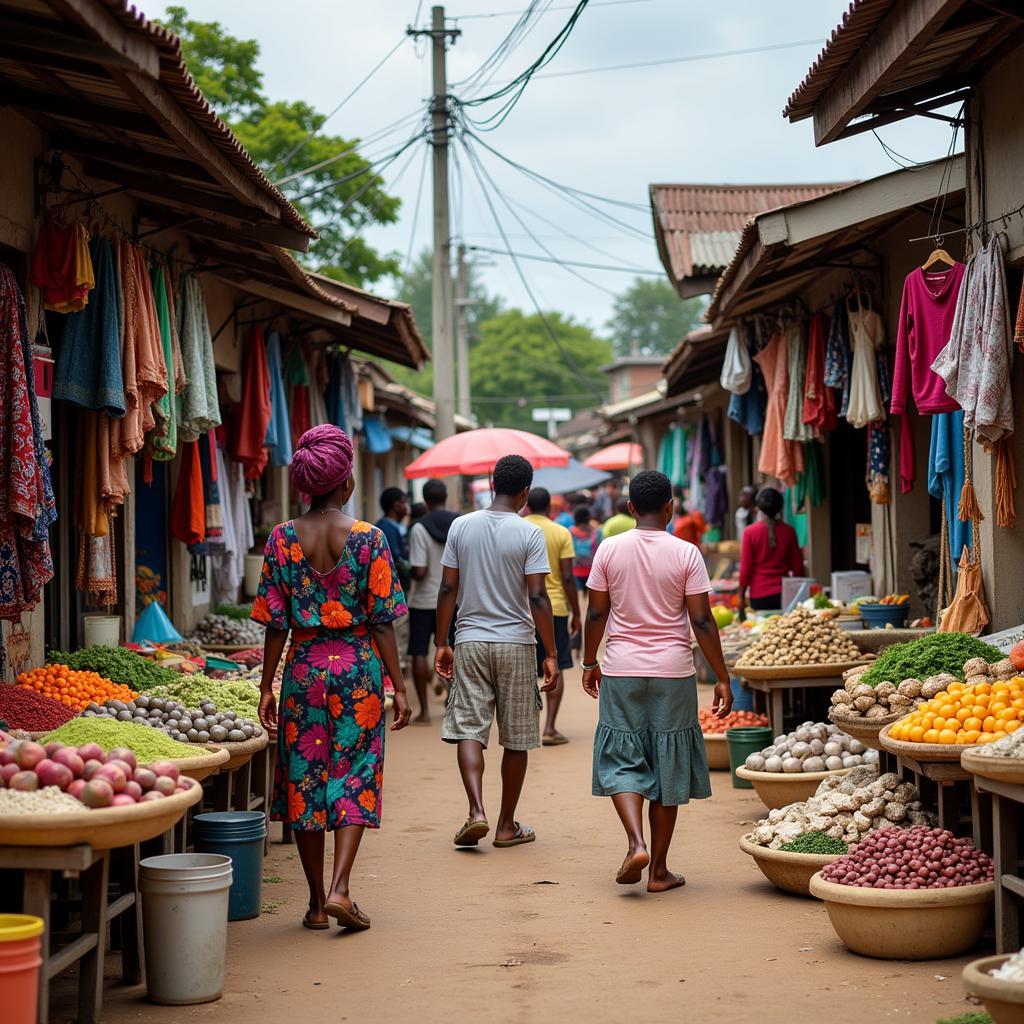African Forehead Jewelry: A Symbol of Beauty and Heritage
African Forehead Jewelry, a striking adornment with deep cultural roots, represents more than mere decoration. From intricate headbands to delicate chains, these pieces reflect a rich tapestry of traditions, status, and artistic expression across diverse African communities. These adornments often hold symbolic meaning, connecting wearers to their ancestors and heritage. Let’s delve into the fascinating world of African forehead jewelry, exploring its various forms, significance, and enduring appeal.
African forehead jewelry comes in a stunning variety of styles, each unique to specific regions and cultures. Materials range from precious metals like gold and silver to more readily available resources like beads, shells, and feathers. Elaborate designs often feature symbolic motifs, reflecting spiritual beliefs, social status, or family lineage. For example, some pieces incorporate animal figures representing strength or wisdom, while others showcase intricate geometric patterns associated with specific clans or tribes.
The Cultural Significance of African Forehead Jewelry
Beyond their aesthetic appeal, these adornments hold profound cultural meaning. In many African societies, forehead jewelry signifies a woman’s marital status, social standing, or even her spiritual connection. Specific designs can indicate a woman’s tribe or clan, acting as a visual marker of identity and belonging. In some cultures, forehead jewelry is worn during ceremonies and rituals, adding to the spiritual significance of the occasion.
In West Africa, elaborate headpieces are often worn by brides during traditional wedding ceremonies, symbolizing their beauty and purity. Similarly, among the Fulani people, forehead jewelry is an integral part of a woman’s attire, reflecting her social status and wealth. The size and intricacy of the piece often correlate with the wearer’s prominence within the community.
Exploring Regional Variations in Forehead Adornments
Across the vast continent of Africa, the styles and materials used in forehead jewelry vary significantly. North African cultures often incorporate coins and intricate metalwork into their designs, reflecting the influence of Berber and Arab traditions. East African communities, on the other hand, favor beaded headbands and elaborate hairstyles adorned with shells and feathers. These diverse expressions showcase the richness and creativity of African artistry.
African dresses with matching head wraps are often complemented by forehead jewelry, creating a cohesive and stunning ensemble. This further emphasizes the importance of adornment in African culture and the interplay between different elements of traditional attire.
How to Choose and Wear African Forehead Jewelry
When selecting African forehead jewelry, it’s important to consider the occasion, your personal style, and the cultural context of the piece. If you’re attending a formal event, a more elaborate piece made of precious metals might be appropriate. For everyday wear, a simpler design with beads or shells could be a more practical and versatile choice. It’s also essential to respect the cultural significance of the jewelry and avoid appropriating styles that hold specific meaning within a particular community. African penish and other elements of traditional dress should be considered when creating a complete ensemble. This holistic approach to fashion showcases respect for the interconnectedness of cultural expression.
Learning how to draw an African face can further deepen your appreciation for the intricate details and artistry that goes into creating these beautiful adornments. Understanding the facial features and proportions helps in appreciating how forehead jewelry complements and enhances the overall aesthetic.
Conclusion
African forehead jewelry is a powerful symbol of beauty, heritage, and cultural identity. From intricate gold headbands to delicate beaded chains, these adornments represent a rich tapestry of traditions and artistic expression. By understanding the cultural significance and regional variations of African forehead jewelry, we can appreciate the artistry and deep meaning behind these stunning pieces. These adornments offer a glimpse into the diverse and vibrant cultures of Africa, showcasing the beauty and power of adornment as a form of self-expression and cultural preservation. African forehead jewelry continues to inspire and captivate, connecting us to the rich history and vibrant artistry of the continent.
FAQ
- What does African forehead jewelry symbolize? It can symbolize marital status, social standing, spiritual connection, or tribal affiliation, depending on the culture and specific design.
- What materials are used to make African forehead jewelry? Materials range from gold, silver, and other metals to beads, shells, feathers, and other natural materials.
- Where can I buy authentic African forehead jewelry? You can find authentic pieces from reputable vendors specializing in African art and crafts, both online and in physical stores.
- How do I choose the right African forehead jewelry for me? Consider the occasion, your personal style, and the cultural context of the piece.
- How do I care for my African forehead jewelry? Care instructions will vary depending on the materials used. Consult the seller or a jewelry professional for specific guidance.
- Is it culturally appropriate to wear African forehead jewelry if I’m not African? It is important to wear it respectfully, understanding its cultural significance and avoiding appropriation.
- What are some popular styles of African forehead jewelry? Popular styles include beaded headbands, metal chains, and elaborate headpieces.
Need more help? For inquiries about African cultural items, including dresses with matching head wraps, penish, face drawing, or forehead jewelry, contact us at +255768904061, [email protected] or visit us in Mbarali DC Mawindi, Kangaga, Tanzania. Our 24/7 customer service team is always ready to assist.



